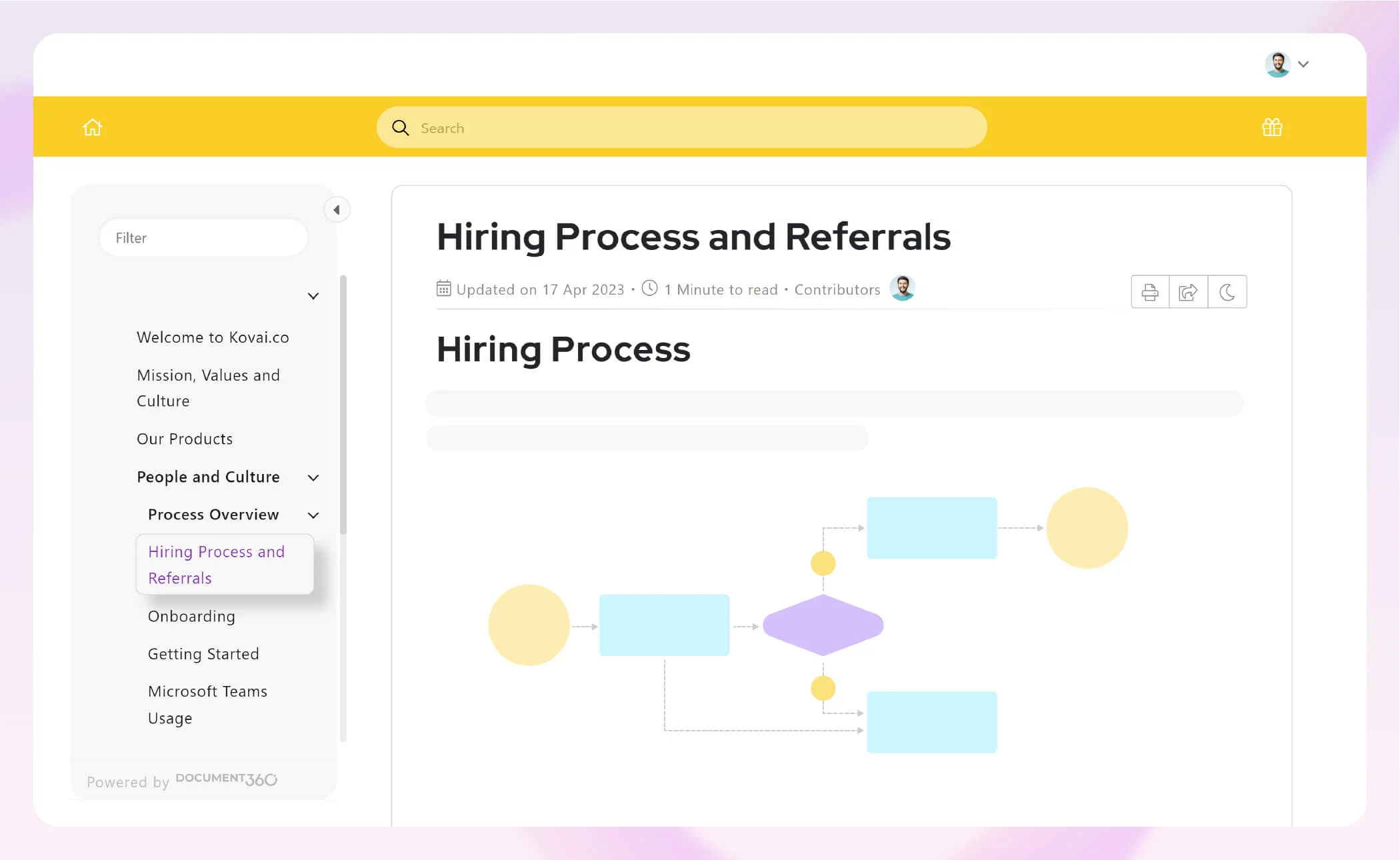If your business is struggling with:
- Reduced employee agility and productivity
- Lack of employee satisfaction
- Decreased profits
It is time you create an operational improvement guide.
It has to be updated frequently since it is not a one-time effort but a continuous process that must occur regularly. However, your operational improvement guide must also emphasize optimizing operational processes rather than reducing operational costs because it is all about keeping your team afloat even during changing times.
But what does operational improvement mean?
What is Operational Improvement?
Operational improvement or OI is a strategic process where organizations find efficient ways to boost the existing employee productivity, revamp company operations, and improve outcomes not just from employees but also from their end.
The idea is to identify possible areas that are hampering team productivity and eliminate inefficiencies to boost profits. Other than that, OI can also include:
- Improving the existing quality of products and services
- Identifying reasons that may increase production costs
- Understanding possible ways to increase market share
And the list goes on.
But how does one go about the process of OI?
Let’s explore our operational improvement guide below to understand it better.
Guide for Strategic Operational Improvement
In this quick operational improvement guide, you will explore nine easy steps that allow you to upgrade your operations strategically and hassle-free. These include:
1. Review the current operations process
When reviewing the existing operations, you must keep the holistic picture in mind: growth.
That’s why during the review process identify possible:
- Resources that are not up-to-date with the latest upgrades in your product and services
- Areas that hamper individual development and growth
- Issues that become a roadblock for employee productivity
- Resources that can perform better post-training
- Areas where your business fails to boost employee and customer satisfaction together
Keeping these factors in mind, reviewing the operations process from both employees’ and organizational perspectives will become easier. This will allow you to identify possible steps you need to take in the OI direction.
2. Set KPIs and performance metrics
Understand how your employees perform individually and how their efforts impact company profits by setting realistic KPIs and performance metrics.
Some of the common KPIs that you must look into include:
- Revenue per employee: Track the revenue an employee brings to your organization.
- Profit per employee: Monitor profits made by an employee for your organization.
- Average task completion rate: Understand how many tasks an employee completes during a specific period.
- Overtime per employee: This metric in particular can help you understand the current employee mentality and their ability to either complete given tasks faster or take extra time to finish them. Note that overtime isn’t an indicator of an employee’s sincerity towards the organization.
Such KPIs can help you understand possible reasons that may hamper employee productivity. But be sure to track the following performance metrics to get an idea of employees are doing their jobs properly or not:
- Number of sales
- Handling time or first-call resolution
- Number of units processed
- Absenteeism Rate
- 180-degree feedback
- Net promoter score
And the list goes on. However, setting these KPIs and metrics will allow you to get a perspective on employee performance hassle-free.
3. Document and review process workflows
If you’ve never documented your process workflows and it is always scattered through multiple documents both online and offline, it is time you change.
Create a process documentation that enables you to find all the details around the existing operations process and act in certain situations accordingly.
You can use a knowledge-based solution to create internal documentation. During the creation process, ensure you:
- Define the objective of the documentation
- Create a clear structure
- Design and save templates
- Add content along with visual assets like images, videos, GIFs
- Add internal links to other relevant articles
- Take content live on the intranet via the knowledge base
4. Break down silos
Avoid being constrained by the same old practices and processes at the workplace. Don’t hesitate to bring in revolutionary ideas that can upgrade your operations. Some of these ideas can include:
- Don’t hesitate to collaborate within and across different teams
- Promote illustrative and transparent communication with teams
- Encourage other employees to reach others via their preferred communication channel
- Incorporate team-building activities
- Bring employees together with a common goal that they relate to
With the help of these ideas, you can find a breakthrough at work and ensure that everyone in the organization escapes from the existing silos.
5. Open communication
Whether they are managers or team members, encourage everyone at your organization to connect and communicate necessary changes as soon as they get to know about them.
Open communication is a crucial aspect of operational improvement. That’s why don’t hesitate to introduce new communication channels or even online office communities where employees can talk faster with each other. With open communication, you can expect results like:
- Boost in productivity
- Reduced work roadblocks
- Clear work expectations
- Improved employee engagement
- Workplace inclusion
- Reduced hesitation around cultural gap
6. Cultivate a positive workplace culture
When finding ways to motivate employees and improve workplace operations, focus on cultivating a positive work culture, too.
Here’s how you can start working in this direction:
- Encourage employees to share ideas around new product innovations. You can accomplish this by conducting hackathons at work. Let them know that no idea is big or small. That your organization is ready to see and understand their vision as well.
- Reward employees regularly for their profits, sales, or even performance in improving your products and services. Do it in front of other employees so that they, too, feel motivated to improve their performances and receive the same rewards.
- Be open about the damages the company might take in certain situations and let them know what you plan to do to tackle them. This type of transparency increases trust among employees towards the organization and makes them more motivated to perform well.
- Increase employee morale whenever they feel low or end up facing frequent burnout. Take them out for activities like team dinners or watching theater films. They need regular doses of energy or the motivation to work for you. You can also offer them access to yoga or meditation plans to help them release their stress in some form.
7. Provide employee training
Don’t miss out on the training part. Employee training is something a lot of companies miss out because of the following reasons:
- Don’t want to invest too much time training employees
- Wish to onboard them right away, thinking that they already have experience with all the tools required
- Remove resources from the team and get new people who they don’t have to train
Such an approach can backfire if employee training isn’t taken seriously.
Instead of setting up in-person sessions with employees to train them, you can create a documentation that walks them through:
- Roles and responsibilities
- Point of contact in times of emergency
- Common questions around HR policies
- Workflows
- Fulfill skill gaps by helping them learn what courses to take
- Communication and collaboration among team members and across departments
This employee training document or even an e-learning course can be updated regularly as per updated feedback to ensure that employees remain skilled and improve work output.
Schedule a demo with one of our experts to take a deeper dive into Document360
Book A Demo
8. Incorporate the use of automation and technology
Facing common issues like human errors frequently?
How about automating such processes that do not necessarily require human input?
Today, we have access to technological innovations like AI and machine learning, which haven’t completely but partially taken over repetitive tasks that earlier required human inputs. What’s more, these tasks can be done faster without the common errors that the companies faced earlier. And if added to a tool, they can offer more flexible features like:
- Detailed analytics data
- Content correction and creation
- Sending bulk emails without human intervention
- Data collection and distribution
With these functionalities, you can ensure that employees have time to focus on more pressing issues and work towards increasing better work outcomes.
9. Provide feedback and improve the process
Let’s not forget to give and take feedback from everyone in the organization.
Hear your employees out and understand what’s not working for them while working for your organization. Once you do collect the feedback, ensure that you let them know that their feedback is being taken seriously and offer them a valid answer on how their suggestions can or cannot be implemented.
This practice will make them feel heard and encourage them to contact your admin staff or managers directly whenever they find themselves in a fix.
Check Out Our Video: Maximizing Team Efficiency with AI in IT Documentation
Why Strategic Operational Improvement Matters?
We know how you can work towards building an operational improvement guide for your business. But the question is, why does it matter, and what’s in it for you?
Here’s your answer:
1. Boost productivity
Experience a surge in your employee productivity with OI. It will help your employees streamline tasks, avoid working on repetitive tasks, and focus on what is truly going to help the company make profits.
2. Cut operational costs
Identify areas that have been making a dent in your pockets for quite some time. While you don’t need to cut down on operational costs, if you feel that certain tasks can be carried out with the help of AI, then try reducing the costs in those areas.
3. Error reduction
Another benefit of OI is to identify ways to reduce frequent errors and avoid delays at work. This can help you save time, reduce frequent reviews and edits in company data, and ensure that employees use their time diligently towards other pressing matters.
4. Ensure business sustainability
You need to think from a long-term perspective when working on OI. Don’t forget to keep encouraging employees to share their collective knowledge to help your business grow. This is only made possible when they connect, communicate, and collaborate on new ideas. What’s more, OI also enables you to make incremental changes that help your business gain a competitive advantage over others in the market.
Also read: Guide to People Process Technology (PPT) Framework
Build Your Operational Improvement Guide with Document360
Creating and publishing a guide can be challenging, especially if it concerns improving existing operational processes at work. There is so much to account for:
- Find ways to boost employee productivity
- Reduce consistent and repetitive work challenges
- Boost business longevity
- Keep your profits incoming
While keeping all these in mind, one must outline and draft the guide themselves. In such a scenario, it would be best if you resorted to process documentation software like Document360.

Example of hiring process created using Document360
You must be guessing – Why?
Well, that’s because Document360 offers:
- With AI assistance, you can get prompt templates to get you started
- An editor that makes content implementation simpler, you can add videos, images, and callouts
- AI capabilities that help you with advanced search add a tag manager and even optimize your content with AI writer
- Collaboration features like in-line comments that help each contributor understand the changes to be made
The feature list doesn’t end here, but you can review them all on our website.
However, the point is that a documentation tool can help you simplify the process of building your operational improvement guide.
Frequently Asked Questions
-
What are operational improvements?
We know that operational improvements help you streamline work at your organization, which results in better productivity and profits. But here’s what you can include in operational improvements:
● Automating tasks
● Increasing communication and collaboration
● Making data accessible
● Setting standard operating procedures
● Reduce meetings
-
How to increase operational efficiency?
Here are a few ways to increase operational efficiency hassle-free:
● Use the right tools and technology to boost productivity
● Identify bottlenecks and eliminate them
● Improve data processing efficiency
● Encourage communication and collaboration
-
3. What is the best way to measure operational efficiency?
You can choose metrics like employee productivity and consequent results, revenue, and even customer satisfaction as ways to measure operational efficiency.




 –
– 

